As a science communicator for the National Park Service, I was visiting Glacier Bay National Park and Preserve to learn about some of the research being conducted there. On this particular morning, I was scheduled to meet Park Ranger Marylou Blakeslee to assist in what she called a “tunicate survey.” Tunicates are common, but somewhat obscure marine invertebrates found in oceans throughout the world. They come in a variety of curious shapes, some of which resemble oatmeal mid-boil more than animals. Aptly nicknamed “sea squirts,” they feed by sucking water through one siphon, extracting the plankton, and squirting the filtered water out through another. While several species occur naturally in Alaska’s waters, an invasive tunicate is rapidly making its way up the Pacific coast. Didemnum vexillum (D. vex, for short) can be thought of as the “kudzu of the sea.” Often introduced to an area via aquaculture or shipping, this aggressive alien spreads rapidly, forming dripping mats that blanket underwater surfaces and smother native species. Worse yet – once it establishes itself, there is no clear way to get rid of it.

No, this is not a close-up of someone’s breakfast. It is a colony of Didemnum vexillum, which, outside of its natural habitat, forms dense mats that spread rapidly, overgrowing underwater surfaces and suffocating living organisms. Photo Credit: U.S. Geological Survey/Dann Blackwood
With that in mind, the park is keeping a close eye on the bay. If they can detect D. vex early, they stand a better chance of eradicating it before it takes over. In conjunction with the Smithsonian’s PlateWatch program, the park has installed settlement plates beneath the dock in Bartlett Cove and checks them regularly for signs of this and other unwelcome invertebrates. In addition to Glacier Bay, PlateWatch has monitors checking plates throughout Alaska, including Kenai Fjords National Park.
However, embarrassingly ignorant about these strange creatures, and fighting exhaustion and a nasty cold, I was struggling to summon enthusiasm for the project. We met at the visitor center and trudged to the docks (OK – I trudged, Marylou was practically ebullient by comparison). When we arrived, she reached beneath the dock and pulled up a plate. I was expecting a small pane of glass smeared with minute traces of something slimy. I was expecting to be unimpressed, and wishing I had stayed in bed.
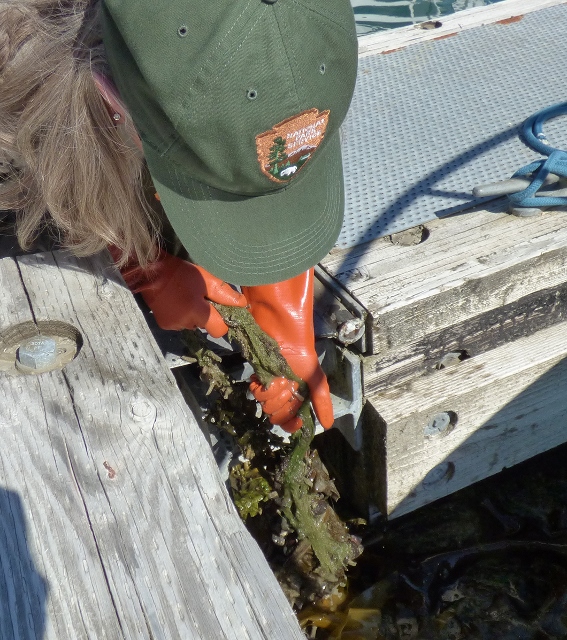
Ranger Marylou reaches beneath the dock to pull up the tunicate plate. NPS Photo
What she held before me, however, blew my mind.
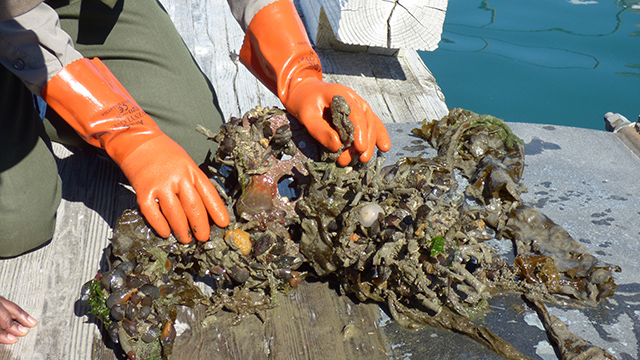
Everything but the kitchen sink. Sea cucumbers, mussels, tubeworms, sponges and more attach themselves to the tunicate plate, and provide us a glimpse of the curious underwater world of Glacier Bay. NPS Photo
In place of a plate, I was looking at a 2-foot long intertwined mass of marine invertebrates. Upon first examination, it appeared to be a rather inanimate string of mussels, tubes, and formless, well, blobs. I stared, gape-mouthed, trying to make sense of the myriad colors, shapes and textures before me. And then it started to writhe.
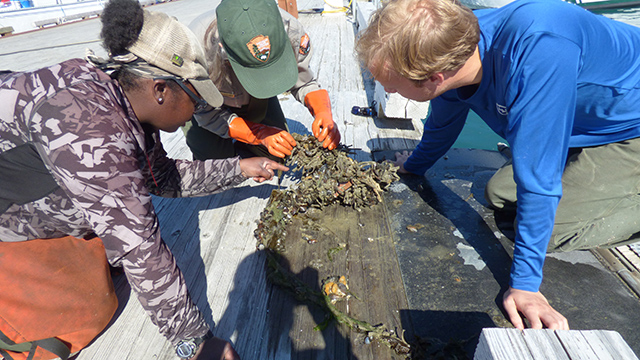
What on earth is THAT? Onlookers can’t help but be intrigued by the bizarre mass of sea creatures growing on the plate. NPS Photo
Colorful, fan-shaped worms poked from the tubes. Tiny crustaceans, including an ornately garbed decorator crab, burrowed deeper into the mass. Multi-colored anemones and sea cucumbers waved probing tentacles. And, nearly unobserved among this bizarre collection of sea creatures, sat a gooey, yellow-orange mass. Could this be our tunicate? After some study, we determined it was likely a native sponge that posed no threat to the bay. While closer examination would be required, no tunicates appeared to be on board.
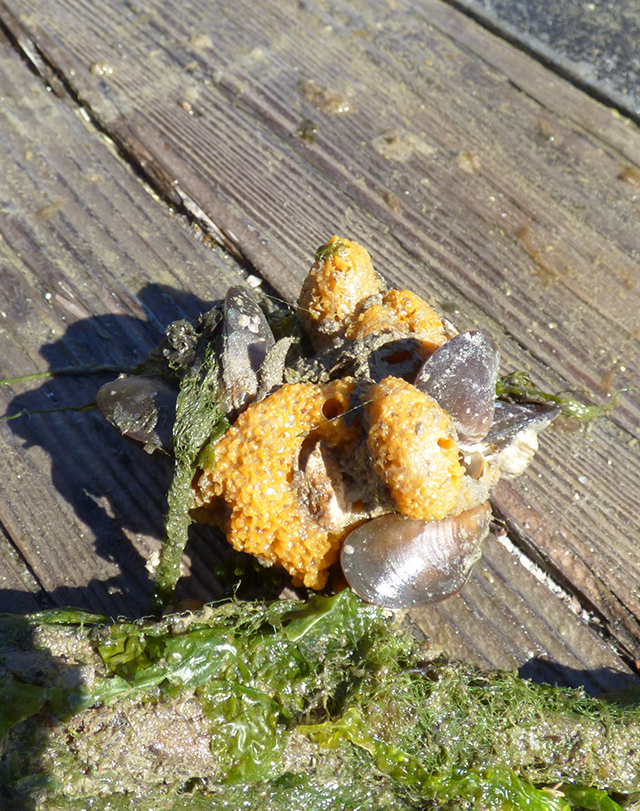
More than just another gooey blob. This native sponge may look primitive, but it is designed for maximum efficiency in filtering nutrients from the water. NPS Photo/M. Blakeslee
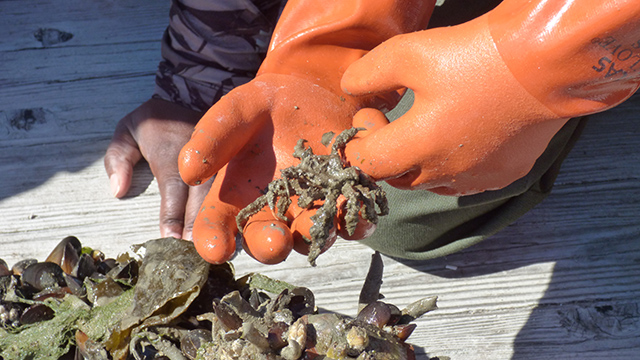
My, what a fine outfit! A decorator crab adorns it body with objects from its surroundings to avoid predation. NPS Photo
I walked away, newly intrigued about this elaborate underworld community, my exhaustion forgotten. I considered the fact that if D. vex were to make it into Glacier Bay, it could literally suffocate all of these living organisms. The potential loss suddenly felt more personal. It didn’t dawn on me until I was back in my room that I never even saw the plate.
You can be a part of the solution by becoming a PlateWatch volunteer! For information on the program or D. vex and other marine invasives visit PlateWatch or contact Linda McCann at mccannl@si.edu.
